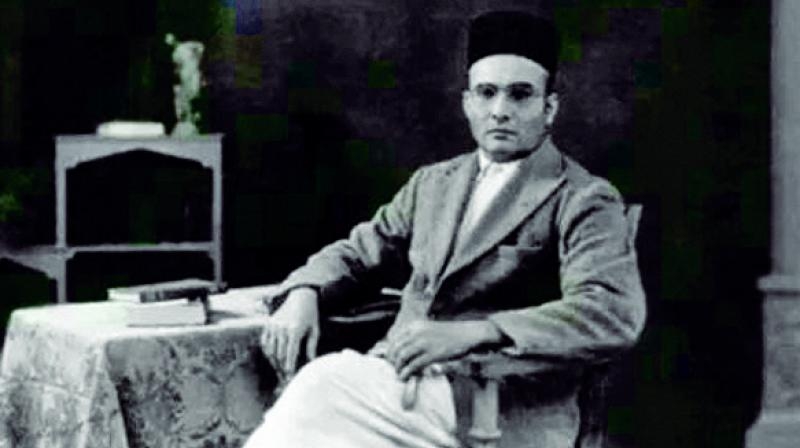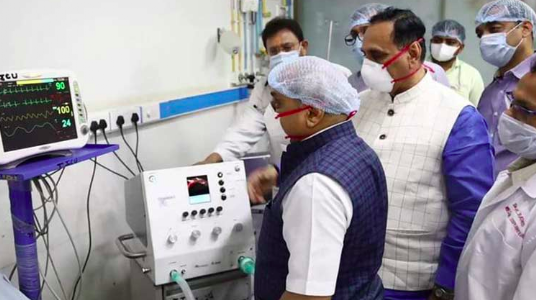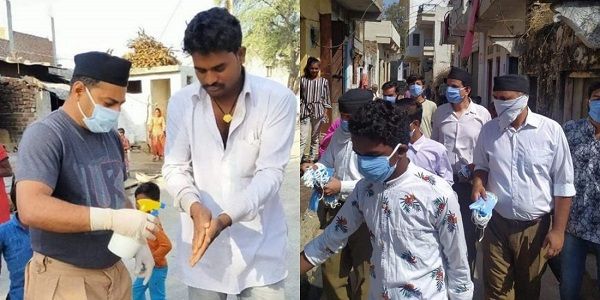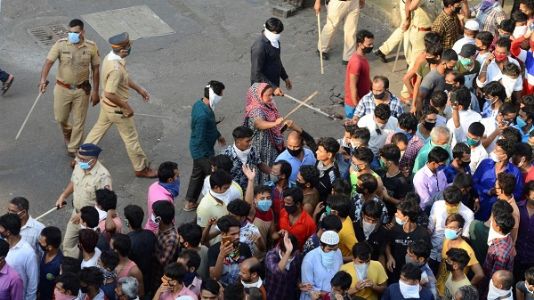A staunch supporter of British Colonialism- Known as a 'Veer'?
Total Views | 107
Note: This article was first published on May 28, 2017, and was republished on May 28, 2019, Savarkar’s birth anniversary at 'The Wire'
Vinayak Damodar Savarkar (1883-1966) – mythologised in popular imagination as ‘Veer Savarkar’ – not only refrained from participating in the freedom struggle after the British released him from prison on account of his relentless pleas for mercy, but also actively collaborated with the English rulers to whom he had declared his loyalty.
At the time when Subhas Chandra Bose was raising his Indian National Army to confront the British in India, Savarkar helped the colonial government recruit lakhs of Indians into its armed forces. He further destabilised the freedom movement by pushing his Hindutva ideology, which deepened the communal divide at a time when a united front against colonial rule was needed. Post independence, Savarkar was also implicated in Mahatma Gandhi’s murder. Such is the man who was declared by Prime Minister Narendra Modi to be “the true son of Mother India and inspiration for many people”, in his Twitter salutation to Savarkar on his birth anniversary on May 28 last year.

A freedom fighter he definitely was, for a certain period in the first decade of the previous century, long before he’d begun articulating the notion of Hindutva. Savarkar was then an atheist and a rationalist, who had started out on a revolutionary road to rid India of her colonial yoke, asserting, “whenever the natural process of national and political evolution is violently suppressed by the force of wrong, the revolution must step in as a natural reaction and therefore ought to be welcomed as the only effective instrument to re-throne Truth and Right.”
On sailing to England to study law in 1906, Savarkar founded the Free India Society to organise Indian students studying in England to fight for independence. However, when the time came to pay the price for being a revolutionary under an oppressive colonial government, Savarkar found himself converted and transformed into “the staunchest advocate of loyalty to the English government”, to use his own words. This was after he was arrested and sentenced to serve 50 years in the infamous Cellular Jail on the Andaman islands after he was found guilty of supplying the pistol that a member of the Abhinav Bharat Society used to assassinate the then collector of Nasik, A.M.T. Jackson, in 1909.
‘Veer’ Savarkar pleading with the British for mercy
Barely a month into the hardships of prison, Savarkar wrote his first mercy petition, which was rejected in 1911. The second mercy petition, which he wrote in 1913, starts with bitter complaints about other convicts from his party receiving better treatment than him. Then, after confessing that he was misguided into taking the revolutionary road because of the “excited and hopeless situation of India in 1906-1907”, he concluded his November 14, 1913 petition by assuring the British of his conscientious conversion. “[I]f the government in their manifold beneficence and mercy release me,” he wrote, “I for one cannot but be the staunchest advocate of… loyalty to the English government (emphasis added)”.
In his fourth mercy petition, dated March 30, 1920, Savarkar told the British that under the threat of an invasion from the north by the “fanatic hordes of Asia” who were posing as “friends”, he was convinced that “every intelligent lover of India would heartily and loyally co-operate with the British people in the interests of India herself.” After reassuring the colonial government that he was trying his “humble best to render the hands of the British dominion a bond of love and respect,” Savarkar went on to exalt the English empire: “Such an Empire as is foreshadowed in the Proclamation, wins my hearty adherence”.
After spending ten years in the cellular jail and writing many mercy petitions, Savarkar, along with his brother, was shifted to a prison in Ratnagiri in 1921, before his subsequent release in 1924 on the condition of the confinement of his movements to the Ratnagiri district and his non-participation in political activities. These restrictions were lifted only in 1937.
Read the full article at-
Bharati Web





